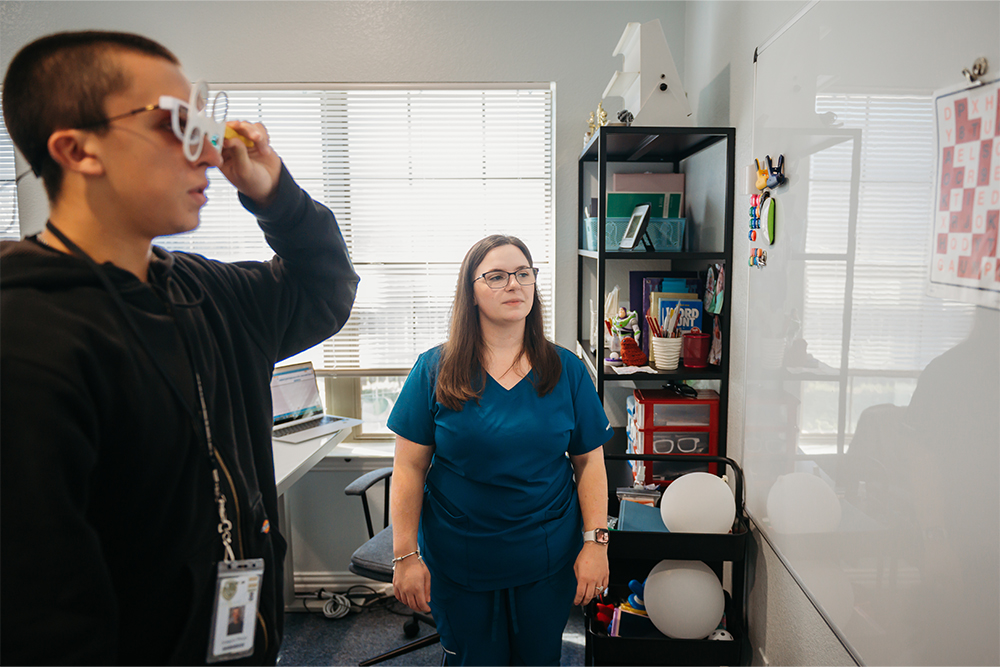Could it be Convergence Insufficiency?
- 8% of the population suffers from convergence insufficiency, which is a visual dysfunction NOT commonly checked in routine eye exams, pediatric exams, or schools. You can have 20/20 vision and still be suffering from a convergence insufficiency. WATCH THE VIDEO FOR MORE INFO.
*Vision therapist, Megan, is utilizing a vectogram with a therapy patient to help improve binocular vision and depth perception.*

What is Vision Therapy?
Vision is LEARNED and the progression starts when we are infants. For some individuals, their visual system did not develop properly. Vision therapy is the process of teaching the patient to see properly utilizing exercises that develop/improve the visual system in the brain. Optometric Vision Therapy/Rehabilitation is a treatment process that utilizes optometric equipment and exercises in a progression format to correct or improve specific dysfunctions of the vision system. You can think of it as physical therapy for the eye and brain connection. It includes, but is not limited to, the treatment of strabismus, amblyopia, accommodation issues (eye’s focusing system), convergence insufficiency, poor ocular motor function, visual perception deficits, and visual motor deficits.
How are we different?
A unique characteristic of our program is that we develop a treatment plan according to the individual patient’s diagnosis and need verses following a standard plan for all patients. We find that with this method we can more efficiently target the patient’s challenge points verses spending time on unneeded activities.
Our variety of optometric equipment is a valuable piece to our program. It is not only important to develop a particular skill by mastering an exercise but it is also important to be able to transfer that skill to other formats so that we can ensure the skill is truly transferable across different environments. For example, a skill may be practiced on paper as desk work, then standing in free space, then on our computer technology, and then utilizing special optometric equipment such as lenses, prisms, goggles, filters, etc.
Our variety of optometric equipment is a valuable piece to our program. It is not only important to develop a particular skill by mastering an exercise but it is also important to be able to transfer that skill to other formats so that we can ensure the skill is truly transferable across different environments. For example, a skill may be practiced on paper as desk work, then standing in free space, then on our computer technology, and then utilizing special optometric equipment such as lenses, prisms, goggles, filters, etc.
Common Conditions that Benefit from Vision Therapy:
- ADD/ADHD
- Amblyopia
- Autism
- Cerebral Palsy
- Post Concussion Syndrome
- Convergence Insufficiency
- Developmental Disorders
- Down Syndrome
- Learning Disability
- Traumatic Brain Injury
*Vision therapist, Megan, is incorporating, Lily, our pet hedgehog into a vision therapy activity to make it fun and exciting for our patient.*

ABOUT
Program Details
Vision therapy does require a home commitment of completing the home exercises appoximately 5 days a week. Lack of adequate practice will affect or hinder progress.
The amount of sessions needed will be recommended by the doctor after the Neuro Eye Evaluation when a diagnosis is determined. On average, patients need 24 (+/-12) sessions of therapy, but this can vary based on diagnosis and severity. Commitment and motivation are key factors that affect the amount of therapy a patient will need as well.







